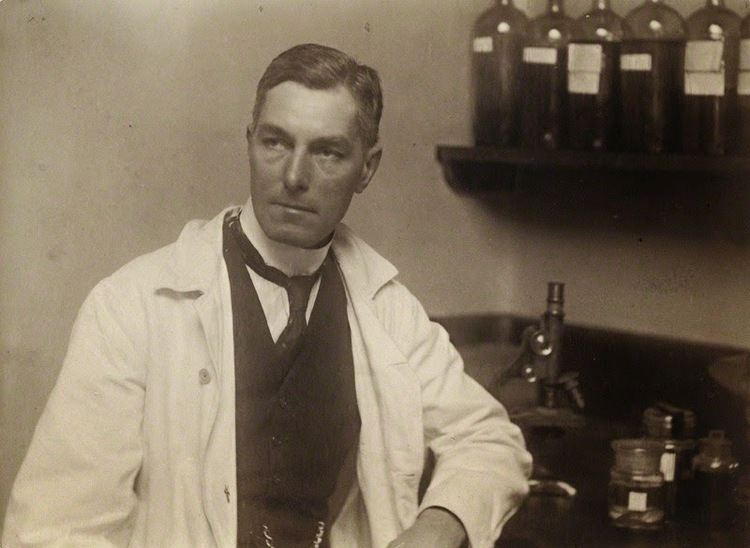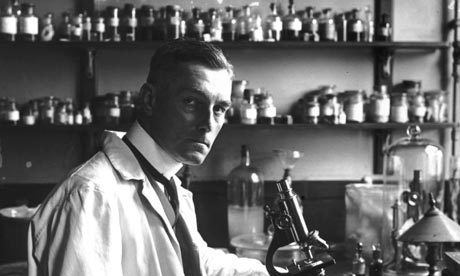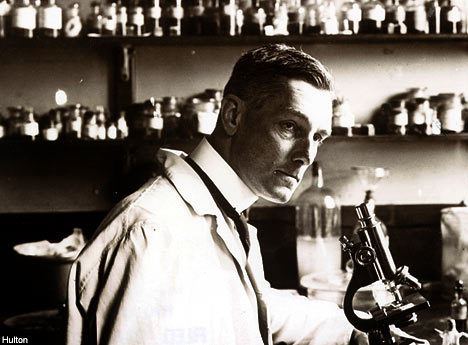Nationality British Role Pathologist | Name Bernard Spilsbury | |
Spouse Edith Caroline Horton (m. 1908) Died December 17, 1947, London, United Kingdom | ||
Exhibition - Sir Bernard Spilsbury: The Father of Forensics
Sir Bernard Henry Spilsbury (16 May 1877 – 17 December 1947) was a British pathologist. His cases include Hawley Harvey Crippen, the Seddon case and Major Armstrong poisonings, the "Brides in the Bath" murders by George Joseph Smith, Louis Voisin, Jean-Pierre Vaquier, the Crumbles murders, Norman Thorne, Donald Merrett, the Podmore case, the Sidney Harry Fox matricide, Alfred Rouse, Elvira Barney, Tony Mancini and the Vera Page case.
Contents
- Exhibition Sir Bernard Spilsbury The Father of Forensics
- Personal life
- Career
- Important cases
- Legacy
- Media
- Posthumous reputation
- References

He also played a crucial role in the development of Operation Mincemeat, a deception operation during World War II which saved thousands of lives of Allied service personnel.

Personal life

Spilsbury was born on 16 May 1877 at 35 Bath Street, Leamington Spa, Warwickshire. He was the eldest of the four children of James Spilsbury, a manufacturing chemist, and his wife, Marion Elizabeth Joy.

On 3 September 1908, Spilsbury married Edith Caroline Horton. They had four children together: one daughter, Evelyn, and three sons, Alan, Peter, and Richard. Peter, a junior doctor at St Thomas's Hospital in Lambeth, was killed in the Blitz in 1940, while Alan died of tuberculosis in 1945, shortly after the Second World War.
The deaths (of Peter, in particular) were a blow from which Spilsbury never truly recovered. Depression over both his finances and his declining health are believed to have been a key factor in his decision to commit suicide by gas in his laboratory at University College, London, in 1947.
Career
Educated at Magdalen College, Oxford, he took a Bachelor of Arts degree in natural science in 1899, an MB BCh in 1905 and a Master of Arts in 1908. He also studied at St Mary's Hospital in Paddington, London, from 1899. He specialised in the then-new science of forensic pathology. In October 1905, he was appointed resident assistant pathologist at St Mary's Hospital when the London County Council requested all general hospitals in its area appoint two qualified pathologists to perform autopsies following sudden deaths.
Important cases
The case that brought Spilsbury to public attention was that of Hawley Harvey Crippen in 1910, where he gave forensic evidence as to the likely identity of the human remains found in Crippen's house. Spilsbury concluded that a scar on a small piece of skin from the remains pointed to Mrs Crippen as the victim.
Spilsbury later gave evidence at the trial of Herbert Rowse Armstrong, the solicitor convicted of poisoning his wife with arsenic.
The case that consolidated Spilsbury's reputation as Britain's foremost forensic pathologist was the "Brides in the Bath" murder trial in 1915. Three women had died mysteriously in their baths; in each case, the death appeared to be an accident. George Joseph Smith was brought to trial for the murder on one of these women, Bessie Mundy. Spilsbury testified that since Mundy's thigh showed evidence of goose bumps and, since she was, in death, clutching a bar of soap, it was certain that she had died a violent death – in other words, had been murdered.
Spilsbury was also involved in the Brighton trunk murder cases. Although the man accused of the second murder, Tony Mancini, was acquitted, he confessed to the killing just before his own death, many years later, vindicating Spilsbury's evidence.
Spilsbury was able to work with minimal remains, such as those involved in the Alfred Rouse case (the "Blazing Car murder"). Here, a near-destroyed body was found in the wreck of a burnt-out car near Northampton in 1930. Although the victim was never identified, Spilsbury was able to give evidence of how he had died and facilitate Rouse's conviction.
During his career, Spilsbury performed thousands of autopsies, not only of murder victims but also of executed criminals. He was able to appear for the defence in Scotland, where his status as a Home Office pathologist in England and Wales was irrelevant: he testified for the defence in the case of Donald Merrett, tried in February 1927 for the murder of his mother and acquitted as not proven.
Spilsbury was knighted early in 1923. He was a Home Office-approved pathologist and lecturer in forensic medicine at the University College Hospital, the London School of Medicine for Women and at St Thomas' Hospital. He also was a Fellow of the Royal Society of Medicine.
In later years, Spilbury's dogmatic manner and his unbending belief in his own infallibility gave rise to criticism. Judges began to express concern about his invincibility in court and recent researches have indicated that his inflexible dogmatism led to miscarriages of justice.
On 17 July 2008, files containing notes on deaths investigated by Spilsbury went under the hammer at Sotheby's and were acquired by the Wellcome Library in London. The files' index cards documented deaths in the County of London and the Home Counties from 1905 to 1932. The hand-written cards, discovered in a lost cabinet, were the notes that Spilsbury apparently accumulated for a textbook on forensic medicine which he was planning, but there is no evidence that he ever started the book.
Legacy
It was Spilsbury who, together with personnel from Scotland Yard, was responsible for devising the so-called murder bag, the kit containing plastic gloves, tweezers, evidence bags, etc, that detectives attending the scene of a suspicious death are now equipped with.
Spilsbury is commemorated by an English Heritage blue plaque attached to his former home at Marlborough Hill in north London.
Media
Spilsbury is mentioned in the Severed Heads song 'Dead Eyes Open' by the narrator, Edgar Lustgarten as 'a great pathologist with unique experience'. The song uses Edgar Wallace's transcription of Patrick Herbert Mahon's trial for the murder of his lover Emily Beilby Kaye.
In the 1956 film The Man Who Never Was, about Operation Mincemeat, Andre Morell played Spilsbury.
In the 1976 Thames Television series Killers, Spilsbury was played in three episodes by Derek Waring
Spilsbury was played by Andrew Johns in the 1980-81 Granada TV series Lady Killers.
Nicholas Selby played Spilsbury in the 1994 mini-series Dandelion Dead, a dramatization of the Armstrong poisoning case.
On 12 June 2008, BBC Radio 4's Afternoon Drama play, The Incomparable Witness by Nichola McAuliffe, was a drama about "Sir Bernard Spilsbury, the father of modern forensics"'s involvement in the Crippen case as seen from the point of view of Spilsbury's wife Edith. The radio play was directed by Sasha Yevtushenko with Timothy Watson as Spilsbury, Joanna David as Edith, Honeysuckle Weeks as the young Edith and John Rowe (who played Spilsbury in an episode of the short-lived 1984 BBC Scotland TV series Murder Not Proven?) as the Lord Chief Justice.
Posthumous reputation
During Spilsbury's lifetime, and as early as 1925 after the murder conviction of Norman Thorne, concern began to be expressed by informed opinion about his domination of the courtroom and about the quality of his methodology. The influential Law Journal expressed 'profound disquiet' at the verdict, noting 'the more than Papal infallibility with which Sir Bernard Spilsbury is rapidly being invested by juries.'.
In more recent years, there has been some reassessment of Spilsbury's reputation, which has raised questions over his degree of objectivity. Professor Sir Sidney Smith judged Spilsbury 'very brilliant and very famous, but fallible...and very, very obstinate.' Dr Keith Simpson wrote of Spilsbury 'whose positive evidence had doubtless led to conviction at trials that might have ended with sufficient doubt for acquittal.'. Burney and Pemberton (2010) noted how the "virtuosity" of Spilsbury's performances in the mortuary and the courtroom "threatened to undermine the foundations of forensic pathology as a modern and objective specialism."
He has in particular been criticised for his insistence on working alone, his refusal to train students, and an unwillingness to engage in academic research or peer review. This, according to the article, "lent him an aura of infallibility that for many raised concerns that it was his celebrity rather than his science that persuaded juries to credit his evidence over all others."
